In today’s competitive landscape, brands are continually on a quest for innovation. A lot of research goes into understanding the consumer mind, their wants, and demands. Using such knowledge, companies invest thousands of dollars every day to develop new products.
A Nielsen report shows that almost 3000 new products are launched every year in the Consumer Packaged Goods (CPG) space. Out of these, only 15% are truly successful.
Even if you have created a great product, a lot of its success is dependent on the launch. A product launch is vital because it creates the first impression in your audience’s minds. Here are some of the best tips shared by experts to help you avoid a product launch failure.
=====X=====
Disclosure: Please note that a few of the links in this article are actually affiliate links. This means that if you click on them, I will get a commission, without any extra cost to you. So, feel free to check these out as I only recommend products or services that I personally tested and highly recommend. For more information, please read my affiliate disclosure in my privacy policy.
=====X=====
Table of Contents
QUICK NAVIGATION
Use the links below to jump to specific sections of the post.
Eugene Levin | Eric Peters | Noah Kagan | Sujan Patel | Nir Eyal | David Skok | Anita Campbell | Shane Barker | Talia Wolf | Nichole Elizabeth DeMeré | Marcus Tandler | Josh Elman | Christopher Gimmer | Justin Rondeau | Benji Hyam | Yoav Vilner | Rob Walling | Matt Janaway | Brant Cooper | John Paul Aguiar | Erik Emanuelli | Mike Cheng | Lukasz Zelezny | Shira Abel | Justin Wu | Lisa Allocca | Blaine Bertsch | Raffaele Gaito | Erika Heald | Karola Karlson | Jimmy Daly | Nirav Dave.
#1. Eugene Levin –SEMrush
![32 experts share their best tips on how to avoid product launch failure [expert roundup] 1 eugene levin](https://shanebarker.com/wp-content/uploads/2017/10/Eugene-Levin.png)
The first experience with your product should have a “wow moment.” If it happens or not really depends on what they expect.
If you promise sci-fi style AI companion and the user gets some weird thing that has maybe five real-life use cases and barely understands words, it can lead to major frustration.
#2. Eric Peters – Hubspot
![32 experts share their best tips on how to avoid product launch failure [expert roundup] 2 eric peters](https://shanebarker.com/wp-content/uploads/2017/10/Eric-Peters.jpg) Have a service level agreement with the product team launching the app that keeps them in tune with the marketing launch plan. Something like “we won't make any public mention of this until it's past its alpha testing phase” for instance. That way, the marketing team has a pretty solid idea of when the product will be ready to launch, and won't have to ‘delay' launch if the product isn't ready.
Have a service level agreement with the product team launching the app that keeps them in tune with the marketing launch plan. Something like “we won't make any public mention of this until it's past its alpha testing phase” for instance. That way, the marketing team has a pretty solid idea of when the product will be ready to launch, and won't have to ‘delay' launch if the product isn't ready.
It can take a few product launches for product teams and product marketing teams to get comfortable with alpha, beta, and production phases. For every team and product, those phases tend to look a bit different. Through each phase, though, the product manager will have a more accurate forecast for having a customer-ready product. Marketing shouldn't rush the product, but they do have to be transparent with the product manager about the importance of timing out a product launch from a marketing perspective.
“If we want to give this product the attention it deserves at launch, I need to feel confident that launch day is indeed, launch day.”
#3. Mike Cheng – Lumen5
![32 experts share their best tips on how to avoid product launch failure [expert roundup] 3 mike cheng](https://shanebarker.com/wp-content/uploads/2017/10/Mike-Cheng.jpg) One of the most common causes for a product launch failure is missing the mark on product market fit. It takes a lot of time and effort as well as trial and error to develop a viable solution for any given problem.
One of the most common causes for a product launch failure is missing the mark on product market fit. It takes a lot of time and effort as well as trial and error to develop a viable solution for any given problem.
It’s important to soft launch your offering and test your minimum viable product with real users before committing to an official product launch. Run a beta test with a small group of users to ensure that you go through at least several development cycles in order to sort out potential problems.
Everything from the product itself to the way your landing page communicates should be tested for user feedback before putting it out there on the market.
#4. Noah Kagan – Okdork
![32 experts share their best tips on how to avoid product launch failure [expert roundup] 4 noah kagan](https://shanebarker.com/wp-content/uploads/2017/08/Noah-kagan.jpg) To avoid product launch failures, you first need to identify the common mistakes made during product launches. In other words, why product launches fail? Here are the top three reasons and how to avoid them.
To avoid product launch failures, you first need to identify the common mistakes made during product launches. In other words, why product launches fail? Here are the top three reasons and how to avoid them.
1. The product falls short of its claims. A successful launch (or any type of marketing campaign) starts with a great product. Early feedback and reviews play a critical role in your product launch. If you think your product is not ready for the mass, scale down the launch or delay it until the product is really ready.
2. The product is positioned for everyone. When your marketing speaks to everyone, it speaks to no one. In the ever-crowded marketplace today, attention is scarce. To grab your audience's attention, you need to speak directly to them. That — at the same time — means you need to ignore everyone else who is not your target audience.
3. The product is great, but there's no market for it. Niche down is great until you're making something for no one except yourself. Stop hoping people to come when you launch it. Instead, validate your ideas before you do anything else.
In case you haven't noticed the pattern yet, most product launch failures don't happen during the product launch, but BEFORE the product launch.
To have a successful launch, prepare upfront and be willing to pivot quickly when necessary.
#5. Sujan Patel – SujanPatel.com
![32 experts share their best tips on how to avoid product launch failure [expert roundup] 5 sujan patel](https://shanebarker.com/wp-content/uploads/2017/05/Sujan-Patel.jpg) Before you launch or even plan to launch it's important to recruit and enlist evangelist who can help promote/support your launch. This forces you to build relationships with your potential customers, get product feedback and validate weather your positioning and product should even exist. If you can't get 5-10 advocates onboard to support your launch you probably shouldn't launch at all.
Before you launch or even plan to launch it's important to recruit and enlist evangelist who can help promote/support your launch. This forces you to build relationships with your potential customers, get product feedback and validate weather your positioning and product should even exist. If you can't get 5-10 advocates onboard to support your launch you probably shouldn't launch at all.
#6. Nir Eyal – NirAndFar.com
![32 experts share their best tips on how to avoid product launch failure [expert roundup] 6 nir eyal](https://shanebarker.com/wp-content/uploads/2017/10/Nir-Eyal.jpg) A successful product launch without sustained engagement is a big waste of time and money. It's what we call a “leaky bucket — users come in, users flow back out. Before you launch your product or service, make sure it is built to engage people over the long-term. The Hooked Model I describe in my book “Hooked,” has 5 simple questions you should make sure to answer to build a habit-forming product.
A successful product launch without sustained engagement is a big waste of time and money. It's what we call a “leaky bucket — users come in, users flow back out. Before you launch your product or service, make sure it is built to engage people over the long-term. The Hooked Model I describe in my book “Hooked,” has 5 simple questions you should make sure to answer to build a habit-forming product.
#7. David Skok – For Entrepreneurs
![32 experts share their best tips on how to avoid product launch failure [expert roundup] 7 david skok](https://shanebarker.com/wp-content/uploads/2017/08/David-Skok.png) Best tip to avoid product launch failure: This one is well known but still worth repeating as even today it is still the most common reason for product launch failure: insufficient customer validation done before starting to build the product. Most products are built by engineers and product people, and they are often uncomfortable cold calling customers to get meetings for early feedback. The net result is that later when they do start cold calling they find out that what they are building doesn't fit a need, or doesn't have the right features to start selling immediately.
Best tip to avoid product launch failure: This one is well known but still worth repeating as even today it is still the most common reason for product launch failure: insufficient customer validation done before starting to build the product. Most products are built by engineers and product people, and they are often uncomfortable cold calling customers to get meetings for early feedback. The net result is that later when they do start cold calling they find out that what they are building doesn't fit a need, or doesn't have the right features to start selling immediately.
#8. Anita Campbell – Small Business Trends
![32 experts share their best tips on how to avoid product launch failure [expert roundup] 8 anita campbell](https://shanebarker.com/wp-content/uploads/2017/10/Anita-Campbell.jpg) Inspect the details as you go along. This is especially important for a new or inexperienced team. They may underestimate the time and details needed to successfully launch. You can help them by checking what they are doing and staying aware. You are doing this not to micromanage, but to help block and tackle for them and to give the occasional assist to complete the play. For instance, they may need you to remove internal obstacles out of the way or to give them permission to bring in more help if needed, or to take other action. By being aware you can step in and assist before deadlines are endangered.
Inspect the details as you go along. This is especially important for a new or inexperienced team. They may underestimate the time and details needed to successfully launch. You can help them by checking what they are doing and staying aware. You are doing this not to micromanage, but to help block and tackle for them and to give the occasional assist to complete the play. For instance, they may need you to remove internal obstacles out of the way or to give them permission to bring in more help if needed, or to take other action. By being aware you can step in and assist before deadlines are endangered.
#9. Shane Barker – ShaneBarker.com
![32 experts share their best tips on how to avoid product launch failure [expert roundup] 9 shane barker](https://shanebarker.com/wp-content/uploads/2017/08/Shane-Barker.jpg) Effective content marketing is the key to a successful product launch. You can promote your product using sneak peeks or teasers to build a hype around it. Visual content is the best way to go about this. The more intriguing and eye-catching your promotion is, the better your chances of a successful launch will be.
Effective content marketing is the key to a successful product launch. You can promote your product using sneak peeks or teasers to build a hype around it. Visual content is the best way to go about this. The more intriguing and eye-catching your promotion is, the better your chances of a successful launch will be.
Bear in mind though, that these teasers should also educate your audience about the product. If they do not understand what it is all about, then no matter how attractive your promotion is, they will not be interested in buying it.
Infographics are an excellent tool that provides the right amount of intrigue and education that your audiences need. You can create and distribute them on leading online publications to make your product launch a success.
#10. Talia Wolf – GetUpLift
![32 experts share their best tips on how to avoid product launch failure [expert roundup] 10 talia wolf](https://shanebarker.com/wp-content/uploads/2017/08/talia-wolf.jpg) Build a product for your customers, not yourself. Remember that you're not the hero of the story, your customer is. This means your entire launch must focus on your prospect's value, not the features, not the pricing or your “cool” design. Make it about the customer from the get-go and you'll not only launch successfully but turn those customers into returning ones.
Build a product for your customers, not yourself. Remember that you're not the hero of the story, your customer is. This means your entire launch must focus on your prospect's value, not the features, not the pricing or your “cool” design. Make it about the customer from the get-go and you'll not only launch successfully but turn those customers into returning ones.
#11. Nichole Elizabeth DeMere – Zest
![32 experts share their best tips on how to avoid product launch failure [expert roundup] 11 nichole elizabeth demere](https://shanebarker.com/wp-content/uploads/2018/06/Nichole-Elizabeth-Demere.jpg) You don’t want to launch without a strong value proposition. I see this happen far too often when people submit products to me for review (to post on Product Hunt – because that’s how they’re going to launch), I go to their website, and their value proposition does not convey their product's value. It’s generic, or vague, or not there at all. There’s nothing that tells potential customers, at a glance, why they should be interested in the product or how it helps them solve their pain points. I recommend that anyone looking to launch a product first get the Value Proposition Design book (strategyzer.com/vpd) and work through it. Although there are many ways to work on your value prop, this is my favorite.
You don’t want to launch without a strong value proposition. I see this happen far too often when people submit products to me for review (to post on Product Hunt – because that’s how they’re going to launch), I go to their website, and their value proposition does not convey their product's value. It’s generic, or vague, or not there at all. There’s nothing that tells potential customers, at a glance, why they should be interested in the product or how it helps them solve their pain points. I recommend that anyone looking to launch a product first get the Value Proposition Design book (strategyzer.com/vpd) and work through it. Although there are many ways to work on your value prop, this is my favorite.
Two really good value propositions are on Lyft right now. They have a two-way marketplace, one for drivers, one for riders, and both value propositions are on point. The driver’s value prop is “turn miles into money” and the riders value prop is “meet your 5-star ride.” The first is stronger than the second, in my opinion, but that “meet your 5-star ride” basically tells riders that they will, absolutely, have a great experience.
#12. Marcus Tandler – RYTE
![32 experts share their best tips on how to avoid product launch failure [expert roundup] 12 marcus tandler](https://shanebarker.com/wp-content/uploads/2017/10/Marcus-Tandler.jpg) I know it's obvious, but the most important tip to avoid product launch failure is to have a great product/market fit. Is there really a need in the market for your new product? Who will buy it and at what price? So before launching your product, you should ask different people, if they would use your product and more importantly if they would also pay money for it (and how much?). Don't just ask your industry friends, but also people you don't have any relation with, since you will probably get a harsher but definitely more honest feedback.
I know it's obvious, but the most important tip to avoid product launch failure is to have a great product/market fit. Is there really a need in the market for your new product? Who will buy it and at what price? So before launching your product, you should ask different people, if they would use your product and more importantly if they would also pay money for it (and how much?). Don't just ask your industry friends, but also people you don't have any relation with, since you will probably get a harsher but definitely more honest feedback.
#13. Josh Elman – Greylock
![32 experts share their best tips on how to avoid product launch failure [expert roundup] 13 josh elman](https://shanebarker.com/wp-content/uploads/2017/10/Josh-Elman.jpg) Start with a small isolated cluster to learn what works and what doesn't. Listen to the feedback and tweak your product *and* your messaging before you go for your big launch.
Start with a small isolated cluster to learn what works and what doesn't. Listen to the feedback and tweak your product *and* your messaging before you go for your big launch.
#14. Christopher Gimmer – Snappa
![32 experts share their best tips on how to avoid product launch failure [expert roundup] 14 christopher gimmer](https://shanebarker.com/wp-content/uploads/2017/10/Christopher-Gimmer.jpeg) Start building your audience well before you launch your product. When your product is ready, you should have an email list of interested buyers ready to sell to. If you promise a smart device that can manage your shopping list and play music, it probably will work because the product does exactly what you promised. Once you are a dominant brand with an army of fans you may care less about it, but if you are reading this article I assume you are not there yet.
Start building your audience well before you launch your product. When your product is ready, you should have an email list of interested buyers ready to sell to. If you promise a smart device that can manage your shopping list and play music, it probably will work because the product does exactly what you promised. Once you are a dominant brand with an army of fans you may care less about it, but if you are reading this article I assume you are not there yet.
The bottom line is that the same group of people can have positive or negative experiences with your product depending on what they expect. You can manage their expectations with your marketing and sales materials.
#15. Justin Rondeau – DigitalMarketer
![32 experts share their best tips on how to avoid product launch failure [expert roundup] 15 justin rondeau](https://shanebarker.com/wp-content/uploads/2017/10/Justin-Rondeau.jpg) The fastest way to some serious failure is to push release until something is “100%.” This will lead to pushed launch dates, confusion among the team, frustration, and just kind of ruins the whole vibe.
The fastest way to some serious failure is to push release until something is “100%.” This will lead to pushed launch dates, confusion among the team, frustration, and just kind of ruins the whole vibe.
What’s worse is this:
There is no 100% perfect product and there never will be.
Think about it even the largest software developers have to administer patches or other fixes because there were simply things that could not be accounted for until it is in the wild.
Now I’m not saying you should launch unfinished products. Instead I’m saying you should launch a complete product that can be improved upon.
You don’t need all those bells and whistles and honestly the longer you keep your product in the vacuum of your dev team instead of out in the wild, the more harm it’s going to do.
So the best way to avoid a product launch failure requires three simple steps:
1. Identify your MVP
2. Pick a ship date
3. Ship on that date insofar as the MVP is complete.
#16. Benji Hyam – Grow and Convert
![32 experts share their best tips on how to avoid product launch failure [expert roundup] 16 benji hyam](https://shanebarker.com/wp-content/uploads/2017/10/Benji-Hyam.jpg) Validate your product prior to ever creating it.
Validate your product prior to ever creating it.
When we created our online course, we waited until launch week to see if anyone would purchase it and we came in way under our goal. With a prior product that we created, we presold 10 seats with a simple landing page that we created in Google Docs before we put any effort into creating the product.
Preselling the product before it's built allows you to see if there's interest for what you're building and at what price point people will purchase at so you know if your product launch will be a success or not.
#17. Yoav Vilner – RANKY
![32 experts share their best tips on how to avoid product launch failure [expert roundup] 17 yoav vilner](https://shanebarker.com/wp-content/uploads/2017/10/Yoav-Vilner.png)
#18. Rob Walling – Drip
![32 experts share their best tips on how to avoid product launch failure [expert roundup] 18 rob walling](https://shanebarker.com/wp-content/uploads/2017/10/Rob-Walling.png)
#19. Matt Janaway – Marketing Labs
![32 experts share their best tips on how to avoid product launch failure [expert roundup] 19 matt janaway](https://shanebarker.com/wp-content/uploads/2017/10/Matt-Janaway.jpg)
It takes a lot of hard work to make sure your product launch is successful so don't take anything for granted and don't leave any stone unturned. The biggest mistake I see over and over is startups thinking their product is good enough to sell itself – it won’t.
#20. Brant Cooper – Moves the Needle
![32 experts share their best tips on how to avoid product launch failure [expert roundup] 20 brant cooper](https://shanebarker.com/wp-content/uploads/2017/10/Brant-Cooper.jpeg)
It's better to start small, validate that you have creating something people want, desire or need and grow from there.
What are the common traits of those who love your product? How do you find more of them. Where do they “hang out”? What market segments adjacent? Does my product create delight for them? Do I need to tweak my marketing and selling tactics?
It's meticulous, hard work. But if it were easy, someone would have already done it, right? If you're willing to hustle getting off the ground, rather than relying on flashy marketing launches, you will find you are ahead of the competition.
#21. John Paul Aguiar – JohnPaulAguiar
![32 experts share their best tips on how to avoid product launch failure [expert roundup] 21 john paul aguiar](https://shanebarker.com/wp-content/uploads/2017/10/John-Paul-Aguiar.jpg)
1. Start releasing content that teases and talks AROUND what you product will be about or the problem it will fix. I'd start this content release at least 30 – 60 days before your launch.
2. My last product launch I did through November and December, I actually did a Pre, Pre launch to a webinar first. I created videos and did Twitter and Facebook Live Q and A sessions. The pre pre launch webinar was a nice test to see peoples’ interest, plus I gave a big early bird discount too. I was a lot of work to do it this way, but the results were good enough that I would do this setup again in future launches.
3. Reach out to the people you have built relationships with over the past months and years and ask for help.
Ask for blog posts on their blogs, get interviewed by them or just have them share the launch across social media… any support you can get will be helpful.
When blog posts or interviews are done, just get them to be released every few days leading up to your launch, that way you have your own content and other people content for you launch released every couple day and not all at once.
4. This is important to product launch success…. TIME IT RIGHT! Make sure your brand is at a point you feel you can launch a product that will sell.
Make sure you launch when no one else is doing a big launch as well.
#22. Erik Emanuelli – No Passive Income
![32 experts share their best tips on how to avoid product launch failure [expert roundup] 22 erik emanuelli](https://shanebarker.com/wp-content/uploads/2017/10/Erik-Emanuelli.jpg)
#23. Lukasz Zelezny – Zelezny.uk
![32 experts share their best tips on how to avoid product launch failure [expert roundup] 23 lukasz zelezny](https://shanebarker.com/wp-content/uploads/2018/03/Lukasz-Zelezny.jpeg)
Once you decide to design and launch your product, perform a proper research regarding to how to acquire traffic. You know… every day, around the whole globe people are creating a lot of nice things. The problem is that not many potential users know about these things.
So the fundamental question you need to answer is: “How will I acquire users?”
My advice is simple. Do not over or underestimate one stream over other. Diversification is a must. My background is SEO but I always say that business owners MUST diversify traffic across few traffic channels. It’s the same with stock market. To feel safer you invest in different type of shares.
So, make sure you can reach decent organic traffic but also the same time start building email lists, put some money into paid search consider paid social media and don’t underestimated your brand. Referral and affiliate traffic also can be an option. That way things work better.
#24. Shira Abel – Hunter & Bard
![32 experts share their best tips on how to avoid product launch failure [expert roundup] 24 shira abel](https://shanebarker.com/wp-content/uploads/2017/10/Shira-Abel.jpg)
On the other hand, I've worked with companies whose product was completely on point and it was amazing. With every ounce of press we got them, their buzz grew and since the product was so good – they launched with product/market fit. It was amazing.
Secondly, make sure that you know your whole team knows the goal for the launch – you can't reach a goal if you don't have one. Make sure everyone's plans align with the goal and results are measured, so after you can do a post-mortem and see what went right or wrong.
Everything is a learning experience. That will help you avoid future launch failures.
#25. Justin Wu – Growthly
![32 experts share their best tips on how to avoid product launch failure [expert roundup] 25 justin wu](https://shanebarker.com/wp-content/uploads/2017/10/Justin-Wu-.jpeg)
#26. Lisa Allocca – Red Javelin Communications
![32 experts share their best tips on how to avoid product launch failure [expert roundup] 26 lisa allocca](https://shanebarker.com/wp-content/uploads/2018/03/Lisa-Allocca.jpg)
#27. Blaine Bertsch – Dryrun
![32 experts share their best tips on how to avoid product launch failure [expert roundup] 27 blaine bertsch](https://shanebarker.com/wp-content/uploads/2017/10/Blaine-Bertsch.jpg)
Avoid ‘stealth mode’ for your startup. There are very, very few times when secretiveness will benefit you as much as openness.The risk of having someone steal your idea is worth the risk you incur by getting feedback so that you build the right thing fast.
Bonus: when people do see what you’re doing, they’ll see that you’re already ahead of them blazing the trail.
2. Build fast and launch a Minimum Viable Product (MVP). Be clear about what benchmark your ‘V' represents – countless times in cash flow management we've seen people mistake the ‘M' for the ‘V', toss precious cash toward launching it and fail.
3. Build a place for your early adopters and advocates with a landing page that outlines very clear benefits, and how your solution is ideal and better than what's on the market. Get permission to gather their email.
Gain a following on relevant social channels. Use all your communication tools to have honest conversations and engagement with your customers. Earn a list of influencers that will take notice in what you are doing and help broadcast when you launch.
4. Save your pennies when you launch. You will absolutely need that money to survive and grow. ‘Big’ launch purchases are highly risky and often have a tendency to balloon if you're newly experienced. It’s really tough to just ‘buy’ the right traffic, especially before you really know your customers well.
Avoid the huge and expensive launch parties in favor of putting your cash where you get the biggest return on the lowest risk.
#28. Raffaele Gaito- RaffaeleGaito.com
![32 experts share their best tips on how to avoid product launch failure [expert roundup] 28 raffaele gaito](https://shanebarker.com/wp-content/uploads/2017/10/Raffaele-Gaito.jpg)
Before launching a product (well, before even building it) you should ask yourself “am I solving a real problem?” “how big is my market?” “are there other solutions on the market?” “can I solve the problem better than them?”
And, well, the only way to have those answers is talking with your users, with your audience! Have you ever heard of customer interviews, customer development, soft data and qualitative analysis? That's the best way to avoid a launch failure: talking with people!
#29. Erika Heald – ErikaHeald.com
![32 experts share their best tips on how to avoid product launch failure [expert roundup] 29 erika heald](https://shanebarker.com/wp-content/uploads/2017/10/Erika-Heald.jpg)
#30. Karola Karlson – Aggregate blog
![32 experts share their best tips on how to avoid product launch failure [expert roundup] 30 karola karlson](https://shanebarker.com/wp-content/uploads/2017/10/Karola-Karlson.jpg)
1. A great minimum viable product
2. A solid launch strategy
You product does not have to be relevant to everyone. However, it should be highly beneficial to a specific group of people – your first 1000 fans. These are the people who will fall in love with your product and help to spread the word about it.
Just as important as a good product is thinking about your strategy and launching with a strong marketing plan. I have seen product launches both fail and succeed. Most successful launches were planned months ahead, involved several marketing channels, and started off with an extensive brand awareness campaign.
If you’re launching a new product, combine at least three marketing channels, e.g. PR, social media advertising, and influencer marketing. Each of those channels will help to strengthen your other campaigns. For example, if someone sees the TechCrunch article about your product, they’re also more likely to click on your Facebook and Google ads.
Here are a few tips for making your new product launch successful:
- Be highly responsive – be prepared for queries and comments of people interested (or confused) about your product.
- Be ready to pivot – have a plan B in case your plan A doesn’t work out and your product gets no traction.
- Amplify the media coverage – whenever a popular publication writes about your product, share it on your Facebook page and use a paid promotion to deliver it to thousands of people.
#31. Jimmy Daly – Jimmy Daly
![32 experts share their best tips on how to avoid product launch failure [expert roundup] 31 jimmy daly](https://shanebarker.com/wp-content/uploads/2017/10/jimmy-daly.jpg)
#32 Nirav Dave – CapsicumMediaWorks
![32 experts share their best tips on how to avoid product launch failure [expert roundup] 32 nirav-dave](https://shanebarker.com/wp-content/uploads/2017/10/nirav-dave.png)
Tip 1. Know Your Audience – It is only when you are able to develop a product that appeals to your target audience, would you be able to achieve success. Thus, before you start the development process, simply, ask yourself these three important questions:
- Who is your target audience?
- What would interest them?
- Why should they use your product or service?
Once you get an answer to these questions, you will be in a better frame of mind to understand and develop a product that meets your audience requirements.
Tip 2. Test Your Product – Once the product is developed, put it through rigorous testing to uncover any glitches that need to be fixed before the launch. This is important in order to prevent any disaster later on that could affect your brand’s credibility.
Tip 3. Use Social Media – To build up curiosity and anticipation, use different social channels to give your audience a glimpse of what is awaiting them. This will help create a buzz, giving a positive boost to your product when it finally launches.
Tip 4. Be Creative With Your Marketing Strategy – Once the product is launched, you have to constantly come up with ingenious ways to market your product. Create memorable content, keep a tab on what is trending, actively engage with your followers etc.
Lastly, take time to think through each stage before implementing and don't act in haste, or else you may have to repent at leisure.
=====X=====
Disclosure: Please note that a few of the links in this article are actually affiliate links. This means that if you click on them, I will get a commission, without any extra cost to you. So, feel free to check these out as I only recommend products or services that I personally tested and highly recommend. For more information, please read my affiliate disclosure in my privacy policy.

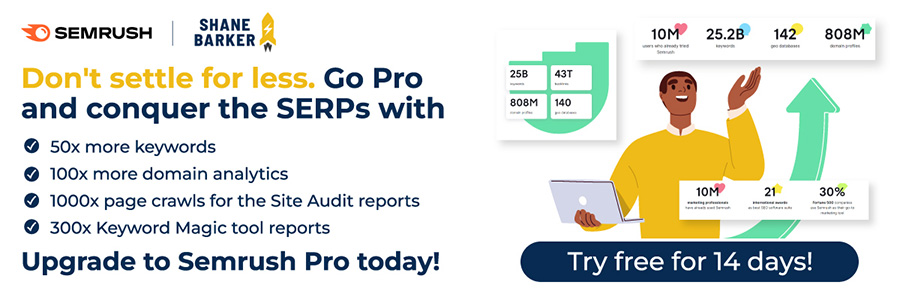
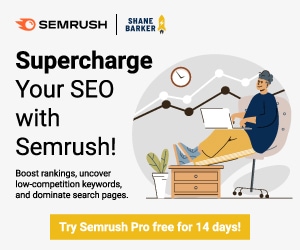
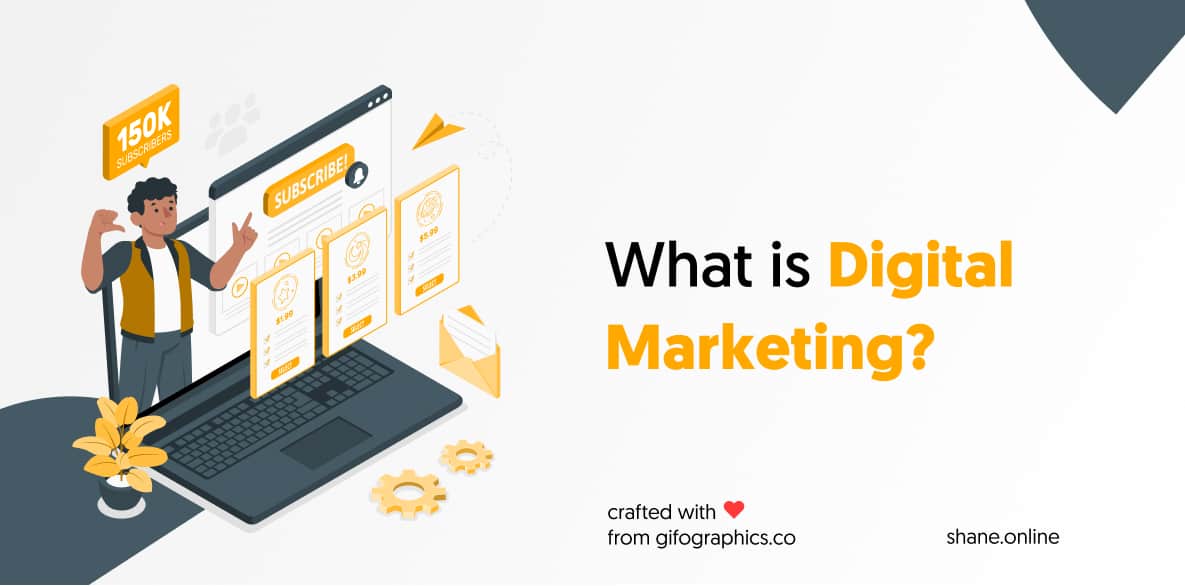
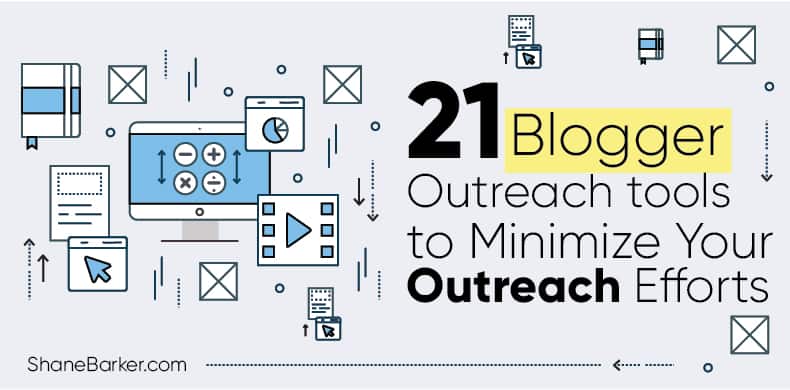
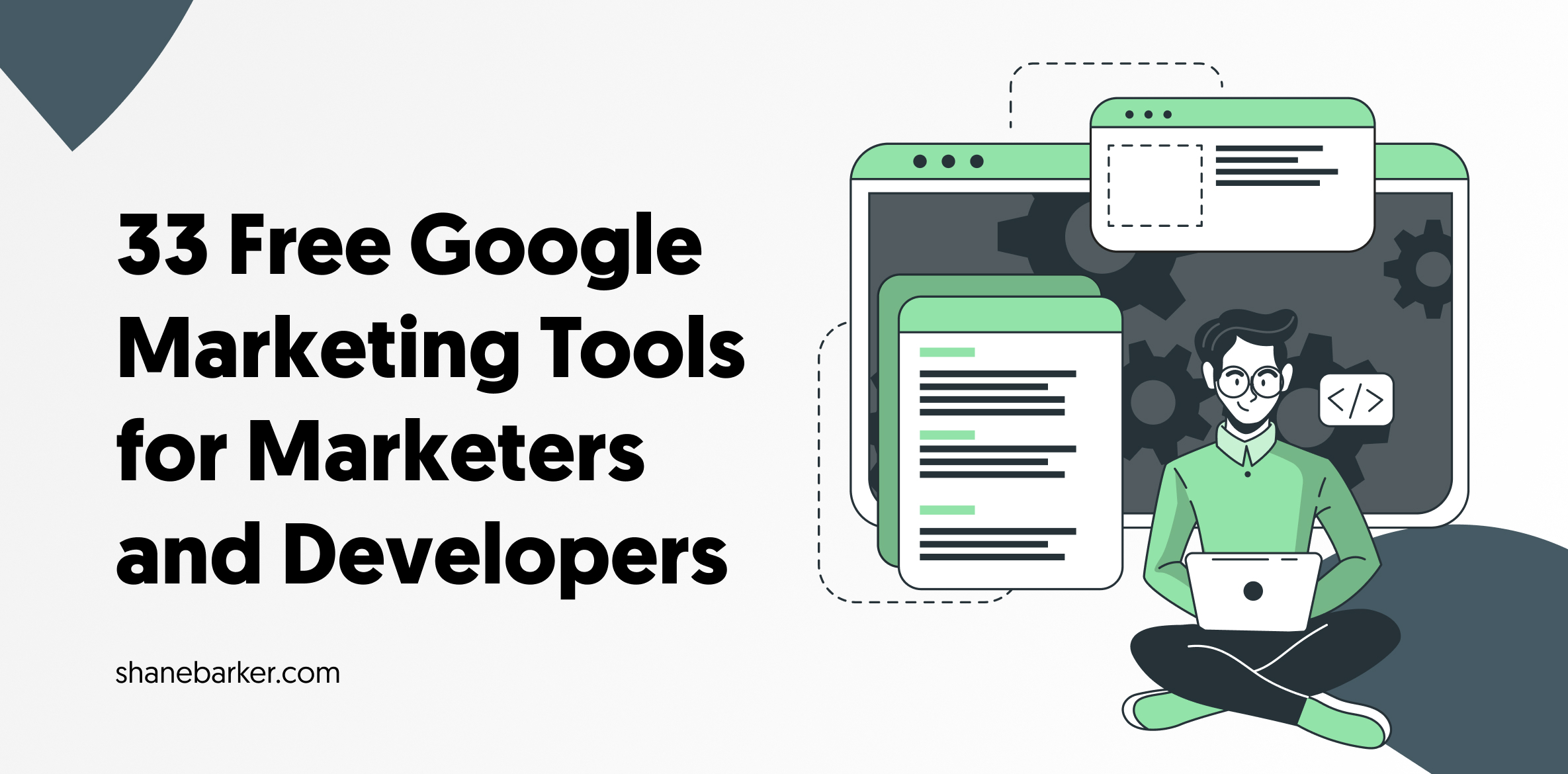
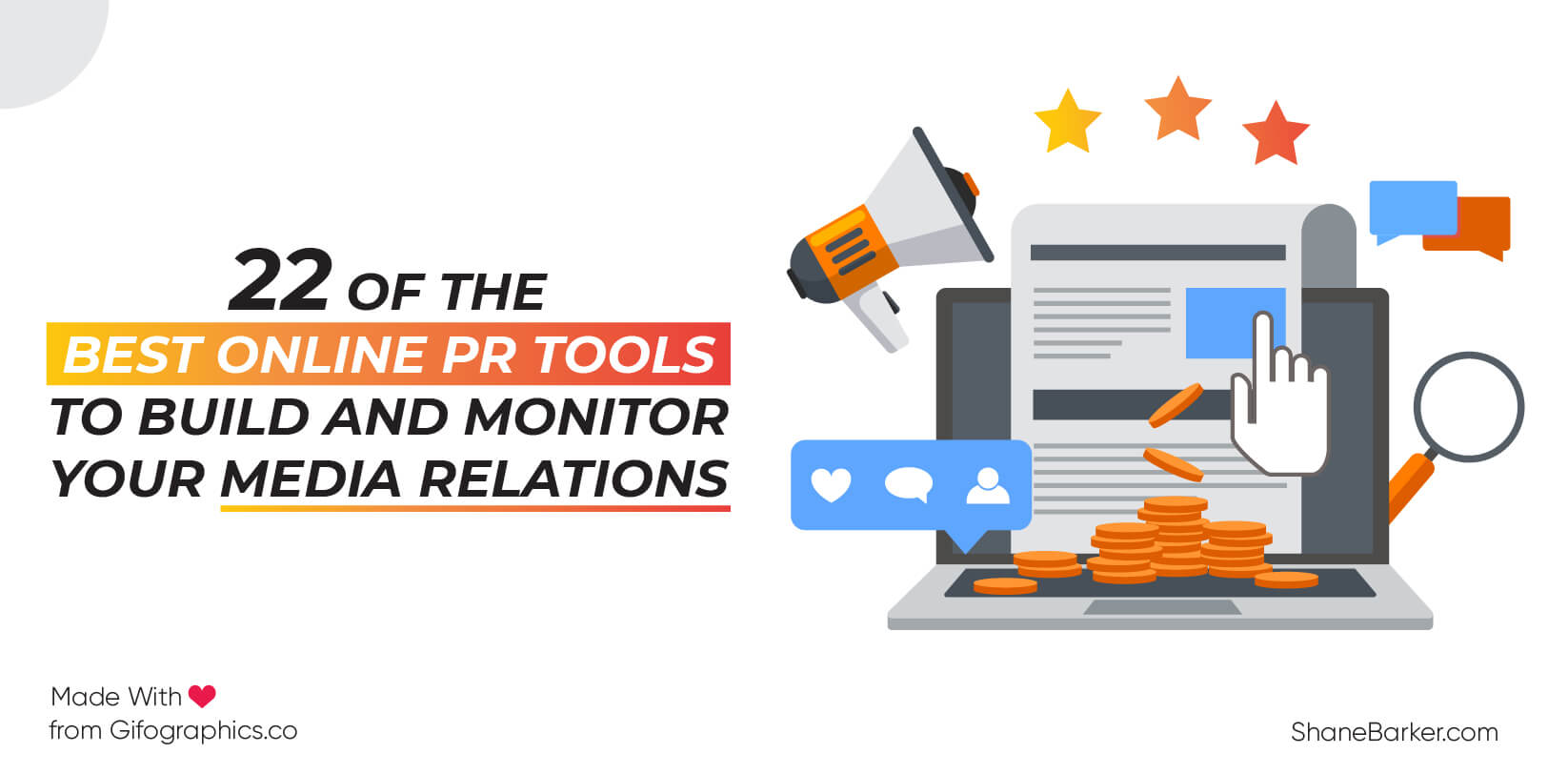
![digital marketing for startups: the strategies to use in [year] 69 best digital marketing strategies for startups](https://shanebarker.com/wp-content/uploads/2021/09/best-digital-marketing-strategies-for-startups.png)

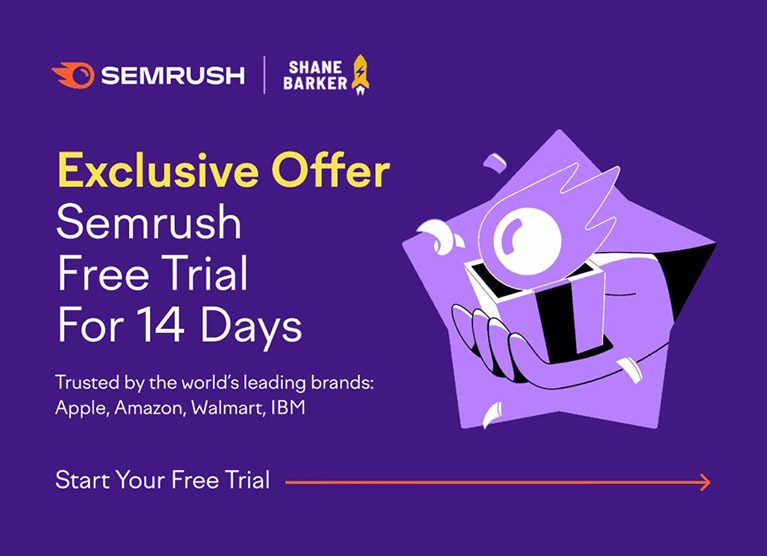
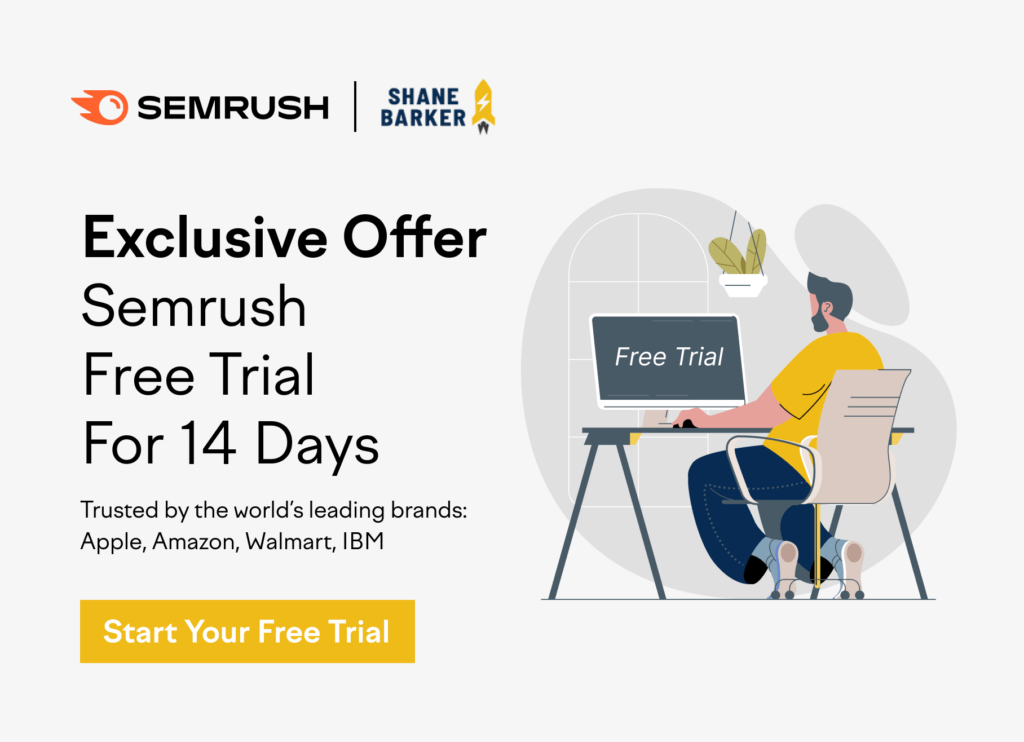


It’s a remarkable piece of writing.
Thank you for sharing the best tips shared by these experts to help us avoid a product launch failure.
Excellent post about the product launch failure.
Thank you so much. I’m glad you liked my post. Keep visiting for more such information.
Thanks for the good blog.
The pleasure was all mine. Thank you so much.
Hello. magnificent job. This is remarkable. Thanks!
Hey Colleen, thanks for your kind words. I really appreciate it.